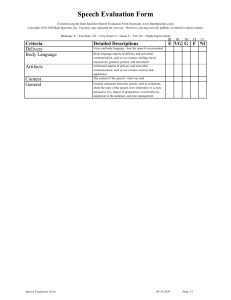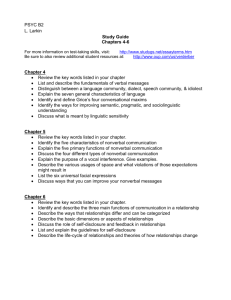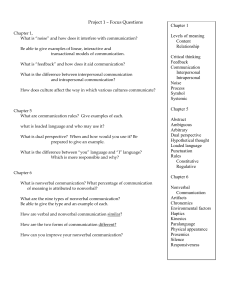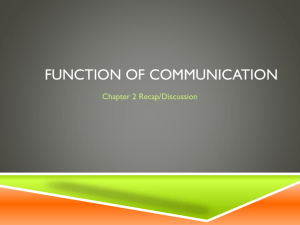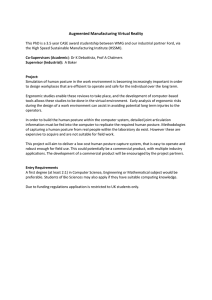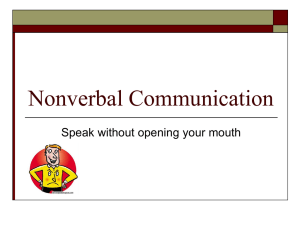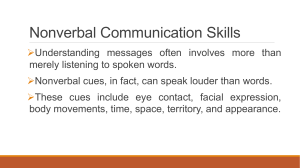Non Verbal Communication
advertisement
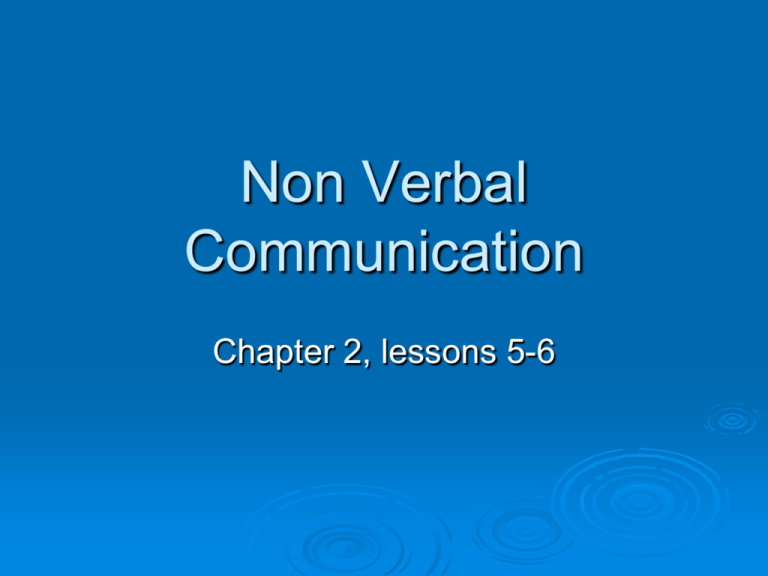
Non Verbal Communication Chapter 2, lessons 5-6 Nonverbal Communicationinformation that is communicated without using words. 93% of communication is nonverbal http://lynn_meade.tripod.com/id56.htm Nonverbal messages relate to verbal messages. Repeat Substitute Complement Emphasize Regulate Contradict Paralanguage the meanings attached to words based on how they are said Includes: articulation pronunciation rate pitch volume stress vocal qualities Kinesics use of body—posture and gestures -general meanings slumped posture erect posture lean away lean forward crossed arms uncrossed arms -mirroring -fidgeting/nervous movement Affect Displays use of face and eyes -eyebrows, forehead, eyes, lips, jaw -express emotions ie. fear, anger, happiness -eye contact Haptics use of touch to communicate -earliest means of making contact with others -handshake, pat on the back, hug -to touch or not to touch… Proxemics -use of space -Intimate=0-18 inches -personal=18 inches-4 feet -social=4-12 feet -public=more than 12 feet Artifactual Communication -appearance -We make assumptions about people based on the clothing they wear and the objects they have. -culture, occupation, Interests, occasion Chronemics -use of time -sends intentional and unintentional messages about what is important to us
